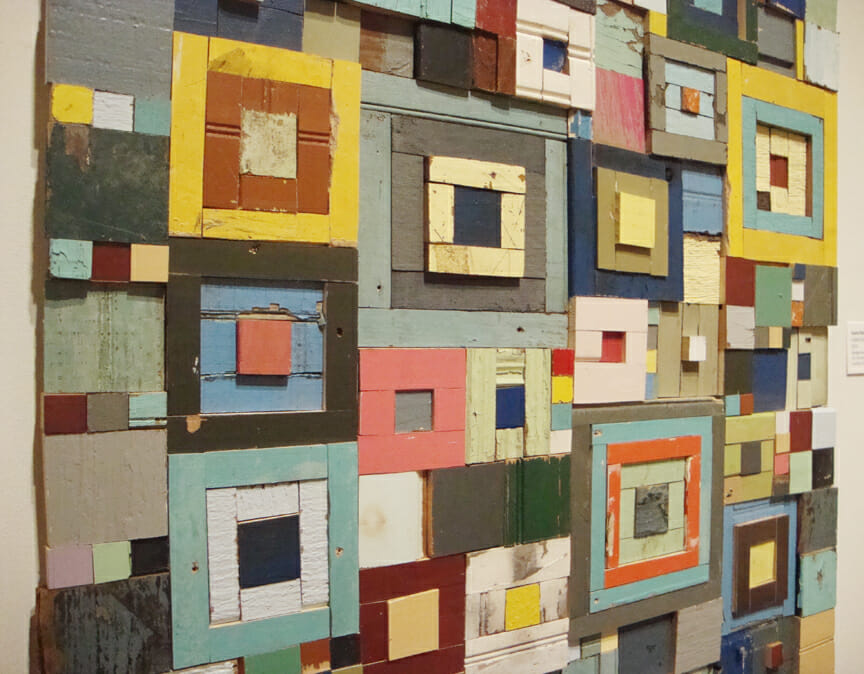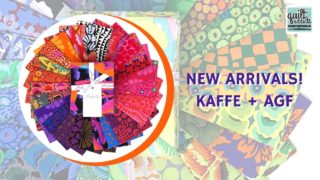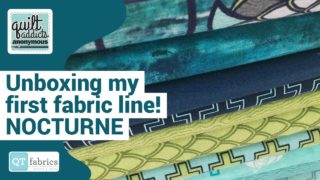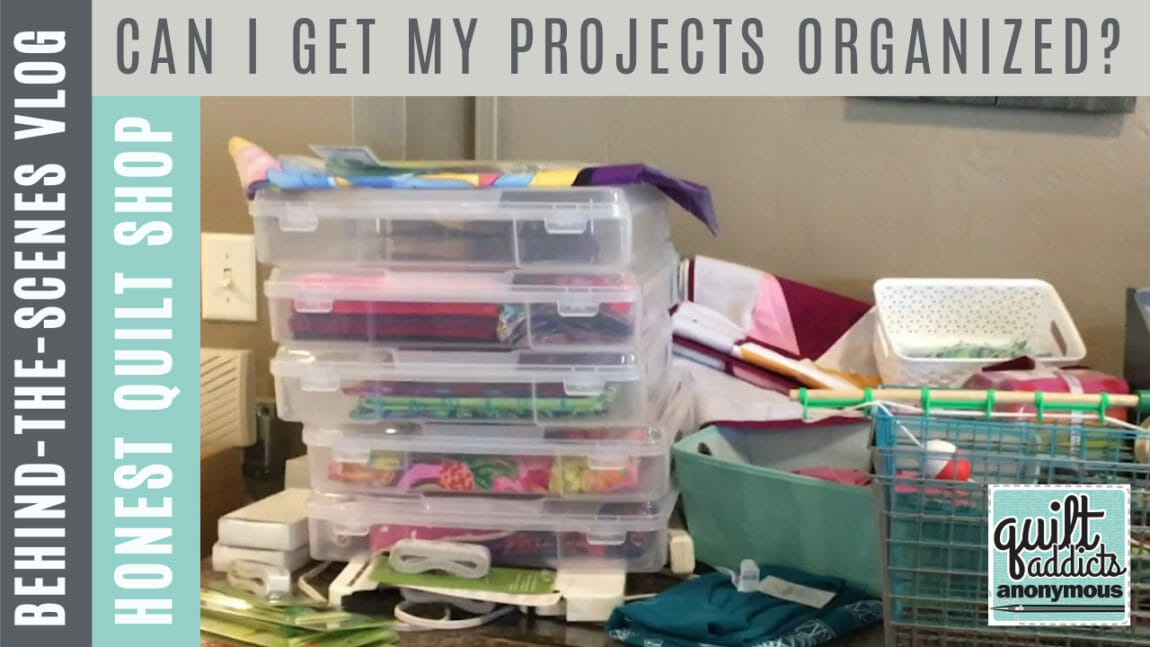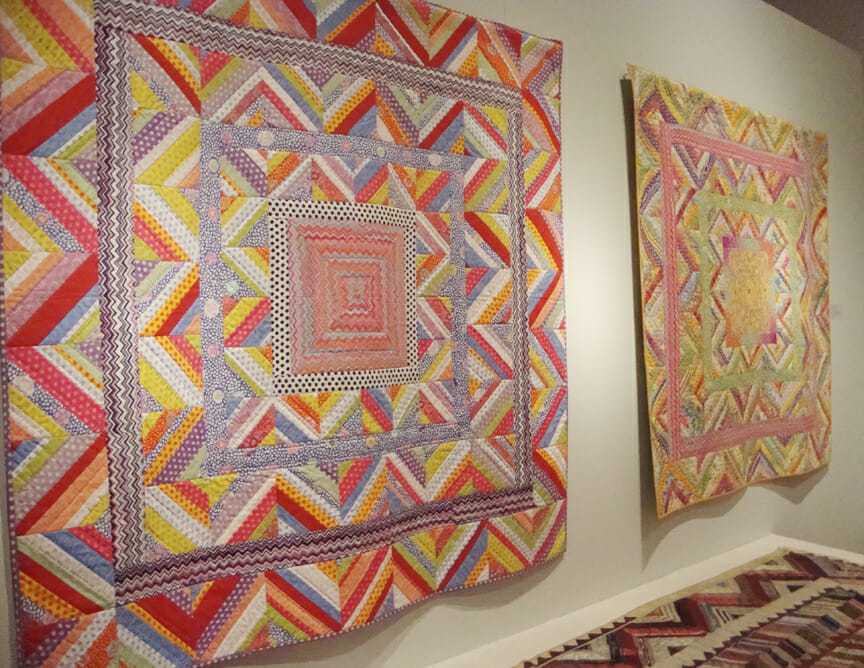
Blanket Statements: Not your grandmother’s quilt show

When prolific quilter and Pennsylvania resident Liza Lucy approached James A. Michener Art Museum Director & CEO Lisa Tremper Hanover about hosting an exhibit of internationally renowned quilter Kaffe Fassett’s work, Tremper Hanover admits she had never heard of the man.
The Doylsetown, Pennsylvania, museum had hosted an exhibit of quilts in recent memory and while it had gone well, she sought the advice of Kirsten M. Jenson, Ph. D. and Gerry & Marguerite Lenfest Chief Curator for her thoughts on the possible exhibit. Well it just so happened that Jenson was a lifelong knitter and knew very well who Fassett was.
“This is not your grandmother’s quilt show. We have to do it,” Jenson recalled saying to Tremper Hanover.
And do it they did. The Blanket Statements: New Quilts by Kaffe Fassett and Historical Quilts from the Collection of the Quilt Museum and Gallery, York, UK, opened Saturday at the Michener. Workshops with Fassett were already sold out before the exhibit opened. The Michener is one of just two museums in the United States to host the exhibit and it is the first to display five additional quilts made in new colorways with the collection.
“This exhibition is very important to us,” Tremper Hanover said. “We are connecting to a community that is steeped in the history of textiles, of making. It is not a craft. It is a skill. It is a passion when quilts are created from the remnants of our history. Kaffe is reinterpreting that.”

The collection features 35 quilts, 15 of which are historical quilts dating from 1780 to 1949. With an idea for this exhibit and an accompanying book, “Kaffe Fassett’s Heritage Quilts” in mind, Fassett went to the Quilters’ Guild collection to find historical quilts that spoke to him and he could reinterpret in his own bright color palette in a way that could be reproduced by quilters of all skill levels.
Using antiques and historical objects in museums as inspiration is not new to Fassett. His first museum exhibition featured knitwear inspired by the collection at the Victoria & Albert Museum in London. But there was something special about these 15 antique quilts that caught Fassett’s eye.
“They were all very scrappy, which is what I look for, something that isn’t like a set match in a pattern,” Fassett said “I just look for a variety. Some have gentle curves. Others just a wonderful use of geometric squares and oblongs. Others with diamond of hexagons or whatever. There were lots of differences and some were very primitive, others were very set and balanced. I wanted that depth in order to make a book and an exhibition that was very juicy and inspiring, not all one note.”
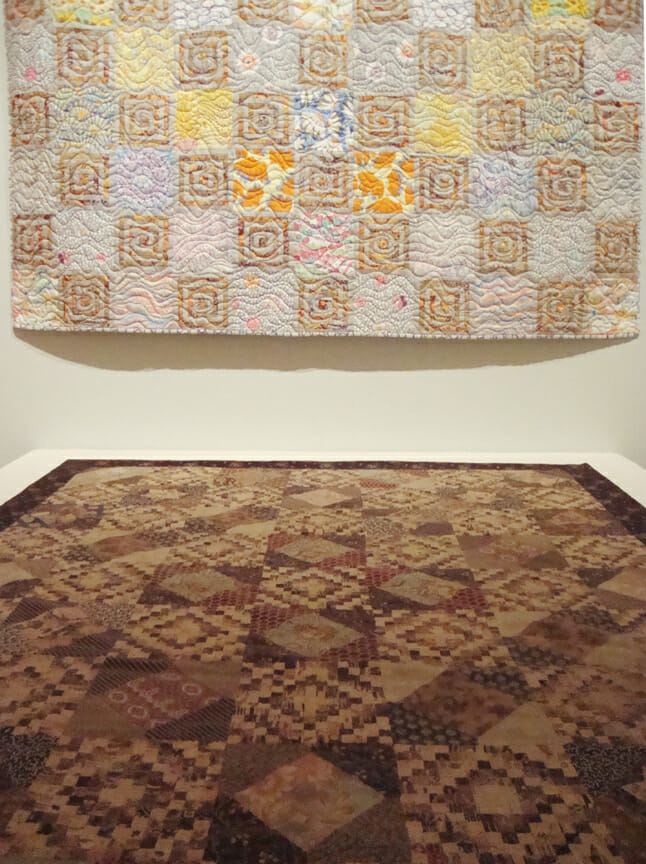
The exhibit is arranged so that the historical quilts are displayed side-by-side with Fassett’s modern interpretations. In some cases in which the historic quilts are too fragile to hang, they are displayed at floor level on planks with a slight rise, providing an interesting perspective for quilters used to seeing quilts hung in exhibitions.
Following the Blanket Statements exhibition, the historical quilts will be archived in England and will be unavailable for public viewing, giving visitors to the exhibit one last chance to see them.
“We have the opportunity to look at continuity and the changes that have happened to patchwork over time by being able to compare historic pieces with new, contemporary pieces. To me, that is really quite exciting,” said Jenson. “To see geometry and pattern, things we normally associate with abstract art, to see them in patchwork and quilting is very exciting and very engaging.”

The walls have been painted shades such as crushed berry and citrus, pulled from the colors used in Fassett’s Autumn Crosses quilt, the cover quilt for the book accompanying the exhibit which creates a log cabin-like appearance without actually sewing any strips together.
Also hanging in the exhibit are two paintings from Lucy’s private collection that were painted by Fassett before he ever began quilting. The paintings are from a time when Fassett was inspired by the look of porcelain on textiles and feature items from his extensive China collection laid out on an antique patchwork quilt. It is these paintings that prompted Lucy to tell Fassett that he was already making patchwork and he just needed to do it with fabric and thread instead of canvas and brush.
“When Kaffe was in the work of designing knitwear, he was looking at old original quilts for inspiration because they’re structured,” said Brandon Mably, Fassett’s longtime creative partner and studio manager. “He was looking at the old world and always has been, so this was just a given to do this.”
Blanket Statements will be on display at the James A. Michener Art Museum through February 21, 2016. Additional workshops with Liza Lucy, who plays an integral role in creating and designing Fassett’s quilts, and Patricia Herr will be held throughout the exhibit. Fassett will also present an artist lecture and book signing on Thursday, November 19, at the museum. Click here for more information about the educational programs.
The exhibit is being displayed in conjunction with Pattern Pieces, an exhibit featuring quilted objects that are not made of fiber. Click here to read a related article about Pattern Pieces.
And click here to read an interview with Fassett, Mably and Lucy, the trio behind all of Fassett’s quilt books and patterns.

